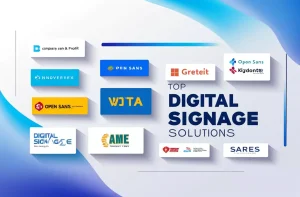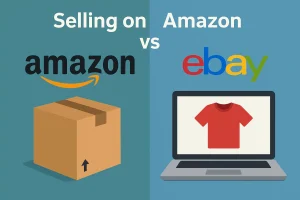Middle Class Money Lessons To Learn In High School, But We Don’t Get It
5 Middle Class Money Lessons To Learn In High School, But We Don’t!
Imagine walking into adulthood with a diploma in one hand and zero understanding of how to manage a credit card, invest for retirement, or build real wealth. That’s not a hypothetical—it’s the reality millions of middle-class Americans live every day. While high school taught us how to solve for “x” and recite the periodic table, it left out the financial formulas that shape our everyday lives.
Data shows that in 2022, poor financial education resulted in over $500 billion in losses across the U.S. population. For the middle class—those often earning too much for assistance but too little to build lasting wealth—this knowledge gap becomes a trap. Without the right financial tools, families fall into debt, miss out on investment opportunities, and struggle to build a safety net.
Let’s begin with one of the most underestimated yet transformative concepts in personal finance: compound interest.
Compound Interest: Your Greatest Ally—or Your Worst Enemy
If there’s one lesson that could change a person’s financial life forever, it’s this: compound interest is either building your wealth—or quietly destroying it. Yet it’s a topic barely mentioned in most high schools.


What Is Compound Interest—Really?
With compound interest, your money grows faster because you earn returns on both your original investment and the accumulated interest, unlike simple interest, which only calculates earnings on the principal amount. That means your money earns money, which earns more money—a snowball effect that gains momentum the earlier you start.
It’s often said that Albert Einstein praised compound interest as the ‘eighth wonder of the world.’ True or not, the numbers speak for themselves—its power is undeniable.
Let’s look at a simple example:
- Scenario A: You invest $5,000 at age 25 in a fund that returns 7% annually. With steady savings, you might have over $75,000 by 65.
- Scenario B: Wait until age 35 to invest the same amount, and your return drops to $38,000—nearly half, even though you delayed by just 10 years.
But It Cuts Both Ways
The power of compound interest works both ways—while it can grow savings over time, it can also amplify debt, which is why many middle-class families find credit card balances so difficult to pay off. A balance of $5,000 at a 20.4% APR—the U.S. average—can take over 30 years to pay off if you only make minimum payments. During that time, you’ll pay more than $13,000 in interest alone.
This isn’t just poor money management—it’s a lack of education. And it’s preventable.
The Rule of 72: Your Quick Guide to Doubling Time
A handy tool that every high schooler should know is the Rule of 72:
Divide 72 by your interest rate to find out how many years it takes to double your money (or debt).
For example:
- At 10% interest, your money doubles in 7.2 years.
- At 2% (typical savings account rate), it takes 36 years.
- If your credit card debt has a 20% annual percentage rate (APR), compound interest may cause your bill to double in around 3.6 years.
Whether you’re investing or borrowing, this rule turns vague math into an actionable insight.
Interest Rate | Years to Double |
2% | 36.0 |
5% | 14.4 |
7% | 10.3 |
10% | 7.2 |
20% | 3.6 |
Why This Matters for the Middle Class
The middle-income demographic is often sandwiched between surviving and thriving. Understanding how compound interest works—both as a tool and a threat—can tip the scale toward financial freedom.

- Build wealth over time by starting early, investing regularly, and staying consistent—even with modest amounts.
- Avoid its dark side by eliminating high-interest debt fast.
- Stop letting low-yield accounts lull your money into stagnation.
Key Takeaways:
Start investing early—even $50/month compounds over decades.
Avoid carrying credit card balances. Interest compounds against you.
Use the Rule of 72 to evaluate every financial decision involving interest.
Credit Scores and Consumer Debt: What They Don’t Teach You About Adulting
By the time most people realize how important a credit score is, they’ve already made mistakes that take years to fix. And it’s no wonder—credit wasn’t covered in school. Instead, millions of young adults enter the real world with zero guidance on how to handle consumer debt, and predators are waiting.
A few missed payments, a high credit card balance, or an ill-advised payday loan can tank your score before you even understand what a credit score is. For the middle class—where access to favorable loans, insurance, and even jobs may hinge on that three-digit number—this ignorance comes at a steep price.

What is a Credit Score, Really?
Credit scores aren’t just digits—they represent your overall financial health. It informs lenders of your likelihood of repaying loans. And it follows you everywhere: buying a car, renting an apartment, applying for a mortgage—even getting certain jobs.
The most widely used model, the FICO Score, breaks down like this:
Factor | Weight | What It Means |
Payment History | 35% | Have you paid bills on time? |
Credit Utilization | 30% | (Keep it under 30% ideally.) |
Length of Credit | 15% | A greater credit standing may result from a longer account history. |
Credit Mix | 10% | It helps to have a variety (credit cards, auto loans, mortgages). |
New Credit Inquiries | 10% | Too many recent applications can ding your score. |
Most people don’t realize that maxing out a credit card—even if you pay it off each month—can still hurt your score due to high utilization. That’s why understanding this formula early matters.
The Real Cost of Bad Credit
Let’s put it in real numbers. A person with a credit score of 780 might qualify for a mortgage at 5.5%, while someone with 620 may only qualify at 7.5%—or get denied altogether. On a $300,000 mortgage over 30 years, that 2% difference adds up to over $100,000 in additional interest.
Now apply that same logic to auto loans, insurance premiums, and even cell phone contracts—you’re paying more for everything, simply because no one taught you how the system works.

The Trap: Consumer Debt and Predatory Lending
Credit can be a powerful tool—but without education, it becomes a weapon turned against the borrower.
Predatory lenders target uninformed consumers with:
- Interest rates for subprime auto loans that are more than 20%
- Plans with “Buy Now, Pay Later” that conceal costs and penalties
- Payday loans with APRs above 300%, leading to a cycle of dependence
- Rent-to-own scams where you pay triple the value of an item over time
And these traps disproportionately affect middle- and lower-income families, especially those living paycheck to paycheck.
The worst part? Falling behind on payments due to high interest lowers your credit score, which leads to worse borrowing terms in the future—a vicious cycle that feeds itself.
How to Build and Protect Your Credit
Financial literacy means learning how to use the system without being used by it.
Steps to take now:
- Always pay at least the minimum due—on time. Set autopay if needed.
- Keep utilization under 30%, ideally under 10% for top scores.
- Check your credit reports annually for errors (free at AnnualCreditReport.com).
- Avoid unnecessary hard inquiries. Space out credit applications.
- To build credit responsibly, consider using secured credit cards or becoming an authorized user on someone else’s account.
And most importantly: never treat available credit as spending money. That “extra $5,000 limit” isn’t income—it’s a loan with a ticking interest clock.
A good credit score saves you money on nearly every major financial decision.
Understand how it’s calculated, and track your progress like your financial health depends on it—because it does.
Avoid predatory loans that keep you in debt, and build credit intentionally, not accidentally.
Taxes and Income Types: It’s Not Just What You Earn—It’s How You Earn It
There’s a reason the wealthy play by different financial rules—they understand the system better. And one of the biggest blind spots for the middle class? Taxes.

Most of us were taught how to write an essay in high school—but not how to read a paycheck stub. We learned the Pythagorean theorem, but not the difference between W-2 wages and capital gains. And because of that, millions of Americans work hard, earn decent money, and still struggle to get ahead—because they don’t know how to keep more of what they earn.
Not All Income Is Created Equal
Let’s start with a truth that can change everything: how your income is taxed depends on how you earn it. And the difference can be massive.
Here’s a breakdown of the three main types of income and how they’re taxed:
Type of Income | Examples | Tax Treatment |
Earned (Ordinary) Income | Wages, salary, freelance work | Taxed at regular federal and state income tax rates |
Portfolio Income | Dividends, stocks, real estate gains | Depending on income, the tax rate might be either 0%, 15%, or 20%. |
Passive/Deferred Income | Retirement accounts, rental income | Often taxed later, sometimes at lower rates or tax-deferred |
Example: If you earn $80,000 working a job, you’ll pay significantly more in taxes than someone who earns $80,000 through long-term investments.
This isn’t loophole magic. It’s simply a lack of education—and wealthy people have access to advisors who understand this. Middle-class families often don’t.
Understand Your Tax Bracket (and Stop Fearing It)
Many middle-income earners panic when they hear they’ve “moved into a higher tax bracket,” thinking it means all their income is now taxed at a higher rate. Not true.

Tax brackets in the U.S. are progressive. This means:
- If you fall into the 22% tax bracket, only the portion of your income that exceeds the previous bracket’s threshold is taxed at that rate.
- The rest is taxed at lower rates.
Knowing this can empower you to make better decisions during raises, career changes, or side hustles. It might even encourage you to earn more, not less.
The Power of Tax-Advantaged Accounts
This is where average earners can finally play offense—not just defense.
Here are three of the most powerful tax optimization tools the middle class can access right now:
- 401(k):
- Contributions are pre-tax, reducing taxable income today.
- Money grows tax-deferred until withdrawal in retirement.
- Many employers offer matching—free money most people ignore.
- Contributions are pre-tax, reducing taxable income today.
- Roth IRA:
- Contributions are made after-tax, but retirement withdrawals are completely tax-free.
- Ideal if you expect your tax rate to rise in the future.
- HSA (Health Savings Account):
- The only triple-tax-advantaged account:
- Tax-deductible contributions
- Tax-free growth
- Tax-free withdrawals for qualified medical expenses
- Tax-deductible contributions
- If unused, it can even be utilized as a retirement account.
- The only triple-tax-advantaged account:
These aren’t complex hedge fund strategies. They’re available to everyday workers—but only if you know they exist.
The Middle-Class Tax Trap
Without this knowledge, middle-income earners fall into a trap:
- They pay the highest effective tax rates, because they rely almost entirely on earned income.
- They forgo tax-deferred growth and valuable deductions.
- They fail to leverage compound returns in tax-advantaged accounts—effectively giving away thousands over time.
Worse, they often assume that tax planning is “only for the rich”—when in reality, it’s even more critical when you’re trying to build wealth with limited resources.
Learn the difference between income types—and how they’re taxed.
Take full advantage of tax-advantaged accounts like 401(k)s, Roth IRAs, and HSAs by contributing up to the annual limits.
Understand your tax bracket so you can optimize, not fear, your earnings.
Use legal tax strategies to keep more of what you earn—not just work harder.
Emergency Funds and Insurance: The Financial Shield Everyone Needs
Picture this: your car suddenly fails, your child requires urgent medical care, or you face an unexpected job loss. What happens next?
Emergency Funds and Insurance
The Financial Shield Everyone Needs
For many middle-class families, the answer is panic. Not because they’re irresponsible—but because they were never taught how to financially protect themselves from the unexpected.
We often think of financial success as growing income or making smart investments—but stability is just as important as growth. That’s where emergency funds and insurance come in.
The Unspoken Risk of Being on the Edge
According to the Federal Reserve, 37% of Americans can’t cover a $400 emergency without borrowing or selling something. That stat is even more alarming when you realize:
- Most people don’t have access to fast, low-interest credit.
- A single emergency can start a cascade of debt—missed bills, maxed-out cards, collections.
- Financial stress leads to emotional stress, strained relationships, and poor decision-making.
This is why financial resilience isn’t about how much you earn—it’s about how well you’re prepared.
The First Line of Defense: The Emergency Fund
Consider an emergency fund for your financial safety net.It won’t generate wealth, but it can protect your finances during a crisis.
How Much Should You Have?
- Single income household: 6 months of expenses
- Dual income household: 3–4 months of expenses
- Gig workers/freelancers: 6–12 months of expenses
This might sound like a lot—but it doesn’t have to be built overnight. Start small:
$1,000 → then 1 month of expenses → then grow from there.
Experts Tip: Keep your emergency fund in a high-yield savings account, not your checking account where you’re tempted to dip into it.
Insurance: The Backstop Most Middle-Class Families Ignore
If an emergency fund is the airbag, insurance is your seatbelt and crash protection. It won’t prevent a disaster—but it limits the financial damage.
Here are the most critical types of insurance the middle class often misunderstands or skips:
Term Life Insurance
- Purpose: Replace income if a breadwinner dies unexpectedly.
- Why it matters: Without it, surviving family members may face housing insecurity or be forced into debt.
- Tip: Skip expensive life. Term insurance is affordable and laser-focused.
Disability Insurance
- Purpose: Replaces your income if you’re injured or too sick to work.
- Reality check: 1 in 4 working adults will experience a disability lasting more than 90 days.
- Most common gap: Relying on Social Security disability—it’s slow, limited, and hard to qualify for.
Umbrella Insurance
- Purpose: Covers liability beyond your auto/home insurance limits.
- Why it matters: If you’re sued (car accident, injury on your property), your assets and even future wages can be seized.
- Cost: Often less than $20/month for $1 million in coverage.
What Happens Without These Protections?
Let’s be blunt:
- A single uninsured medical issue can bankrupt a family.
- A car accident lawsuit can wipe out your home equity and savings.
- A death or disability can derail a decades-long financial plan overnight.
And the worst part? These events are rare—but not impossible. Financially stable families become unstable all the time—not because of bad decisions, but because they were unprotected.
Create an emergency fund, beginning with $1,000, and expand it to cover 3–6 months of expenses.
Prioritize term life, disability, and umbrella insurance—even if your job feels “safe.”
Treat protection like part of your wealth plan, not an afterthought.
Stability is the foundation of freedom. Without it, you’re always one emergency away from starting over.
Investment Strategies: Going Beyond “Save for Retirement”
If you’ve ever been told, “Just put some money in your 401(k),” and walked away feeling more confused than empowered, you’re not alone.

For most middle-class earners, the topic of investing has been reduced to vague, often intimidating advice: “Start early,” “Take more risk when you’re young,” “Diversify.” But what does that actually mean in practice—and how does someone earning an average income apply it effectively?
The truth is, you don’t need a finance degree or six-figure salary to build long-term wealth. You just need a clear roadmap, a few key principles, and the ability to tune out the noise.
Investing Isn’t Just for the Wealthy—It’s the Path to Wealth
The traditional middle-class playbook—work 40 years, stash savings in a low-interest bank account, collect a pension—is gone.
In today’s economy, investing is not optional. If you’re not investing, you’re losing ground. Here’s why:
- Inflation erodes the value of uninvested cash
- Compound growth happens only when money is working for you
- Employer pensions are disappearing, leaving the burden of retirement squarely on your shoulders
The good news? You can start small. Even $50–$100 a month invested strategically can turn into six figures over time—if you know how to do it wisely.
Build a Simple, Bulletproof Strategy (Without a Financial Advisor)

Here are the core components of a smart, beginner-friendly investment plan—designed for middle-class earners:
Index Funds vs. Active Funds
- Index Funds: Track a broad market (like the S&P 500), with low fees and consistent long-term returns.
- Active Funds: Try to beat the market—but 90% fail to do so consistently, and they charge high fees to try.
Bottom Line: You’re likely better off with low-cost index funds (like VOO or FXAIX) that offer exposure to hundreds of companies and grow steadily over time.
Dollar-Cost Averaging (DCA)
- Contribute a set amount consistently (weekly or monthly).
- Smooths out market volatility and builds discipline
Example: Automatically invest $200 every payday into your Roth IRA or 401(k)—rain or shine.
Asset Allocation by Age
Your age and risk tolerance determine how you should split your investments between:
- Stocks (higher risk, higher reward)
- Bonds (lower risk, lower return)
- Cash or equivalents (stable, but low growth)
A simple rule of thumb:
Subtract your age from 110 to determine the percentage of your portfolio allocated to equities.
Retirement Accounts: Know Your Tools

Your investment vehicle matters as much as the investments themselves. Middle-class earners often miss out on huge tax advantages simply because they weren’t taught the rules.
- 401(k): Offered by employers, often includes free money via matching contributions.
- Roth IRA: Funded with after-tax dollars, but grows 100% tax-free if withdrawn after age 59½.
- HSA (Health Savings Account): Triple tax benefit—deductible going in, grows tax-free, and tax-free withdrawals for medical expenses.
If you qualify, the Roth IRA and HSA are two of the most powerful tools available to middle-income earners.
Common Mistakes to Avoid
Let’s clear up a few misconceptions that hold people back:
- “I’ll invest when I earn more.” → The time you spend in the market outweighs the amount you invest.
- “The market’s too volatile.” → Avoiding investment is riskier over time because of inflation.
- “I don’t know enough.” → Start with one fund and grow your knowledge. Simplicity wins.
Use index funds to get broad exposure without high fees.
Automate your investing with dollar-cost averaging to reduce emotional mistakes.
Adjust your asset allocation based on age and goals.
Maximize tax-advantaged accounts like 401(k), Roth IRA, and HSA.
Start today, even if it’s just a little bit; don’t wait for ideal circumstances.
Wealth grows gradually through steady, automated, and patient efforts, not overnight. The sooner you start, the more powerful time becomes on your side.
Conclusion: The Financial Playbook You Were Never Handed
The middle class has long been the backbone of the economy—yet too often, it’s left in the dark when it comes to building wealth.
The five money lessons we explored—compound interest, credit management, tax strategy, financial safety nets, and practical investing—aren’t exclusive to the wealthy. They’re not “advanced.” They’re foundational.
The real problem? Most people simply never had access to this knowledge at the right time.
But you’re here now.
Every financially literate household weakens the grip of generational debt. Well-informed parent raises children with a stronger foundation. Every middle-income earner who learns to invest, save, and protect their money helps shift the balance of power away from predatory systems and back into the hands of everyday people.
This isn’t about getting rich overnight—it’s about getting in control.
Start with one action. Automate a savings habit. Open that Roth IRA. Review your insurance. Learn one concept per week. Then, share what you learn.
Because once you understand the rules, you no longer have to play the game blind.





